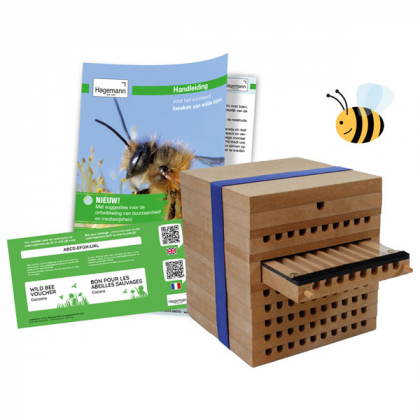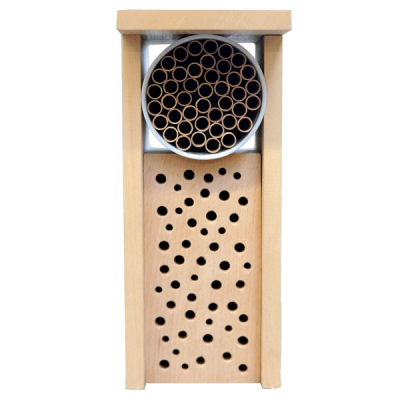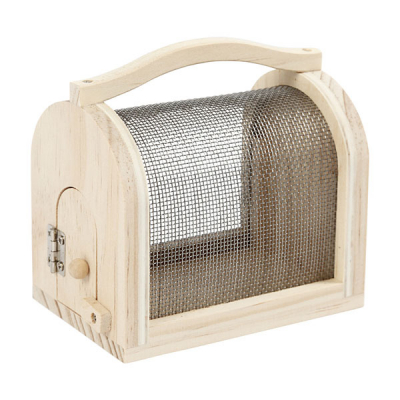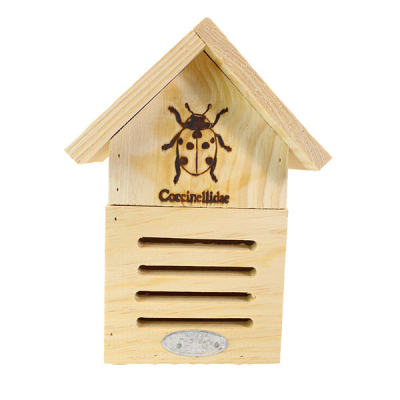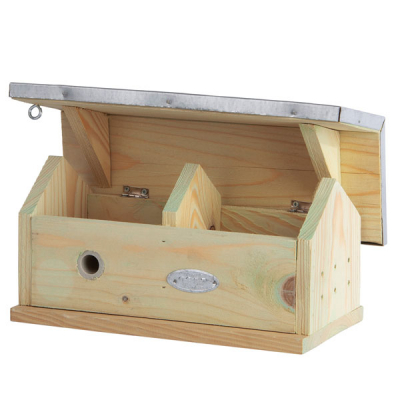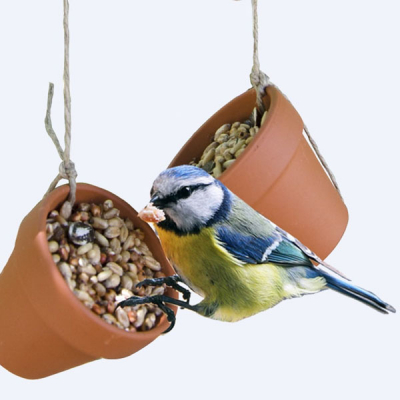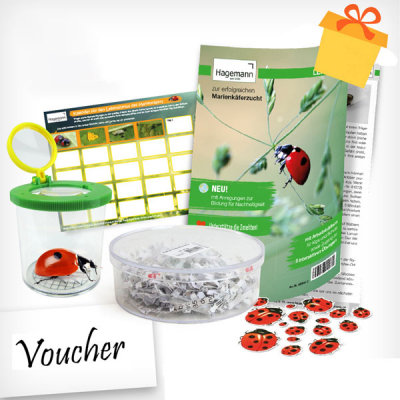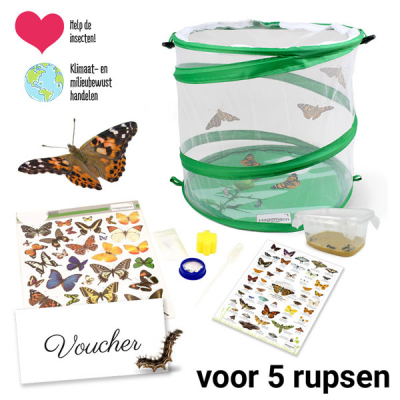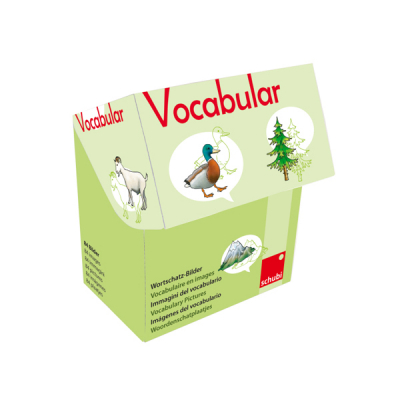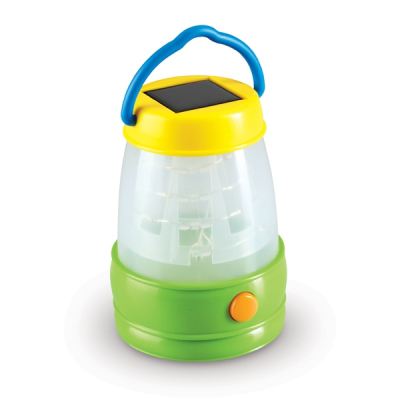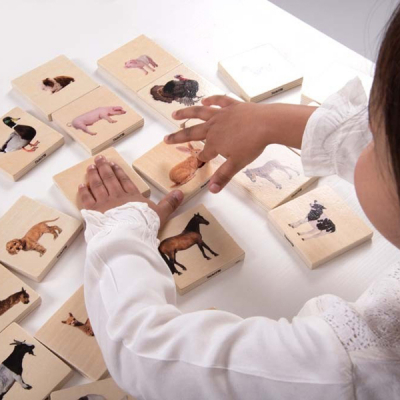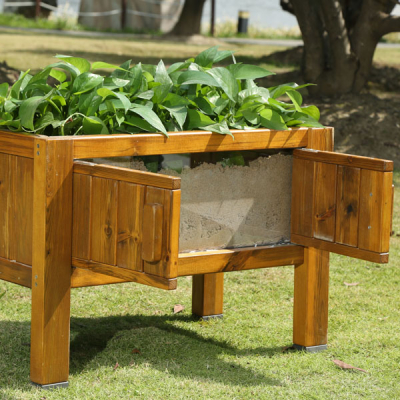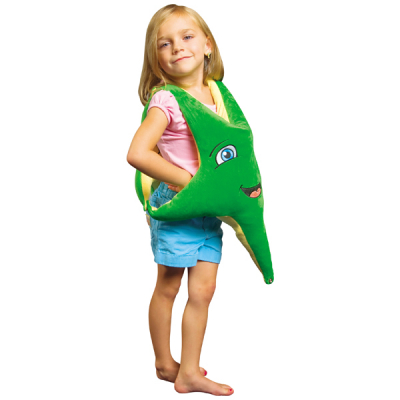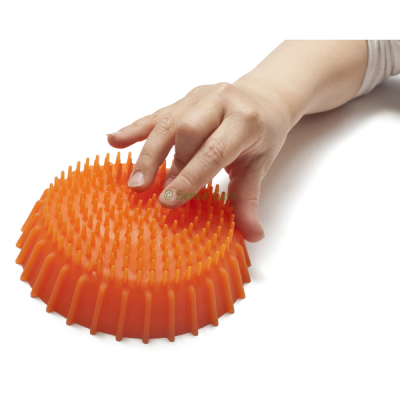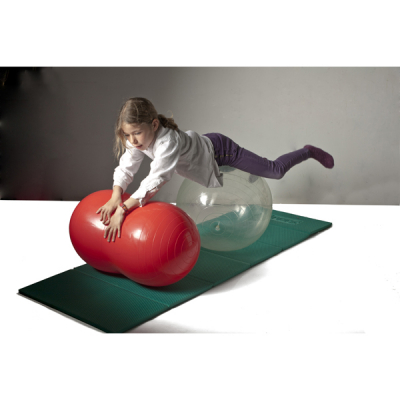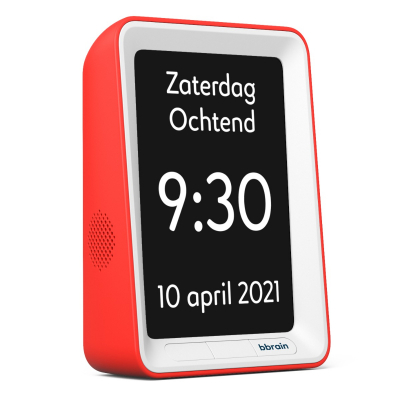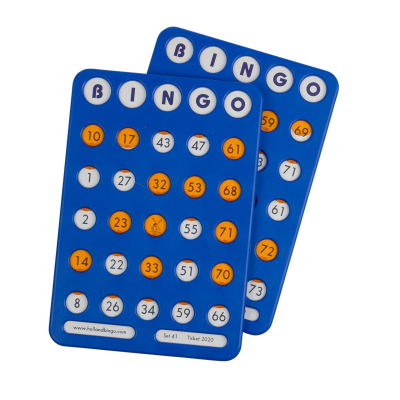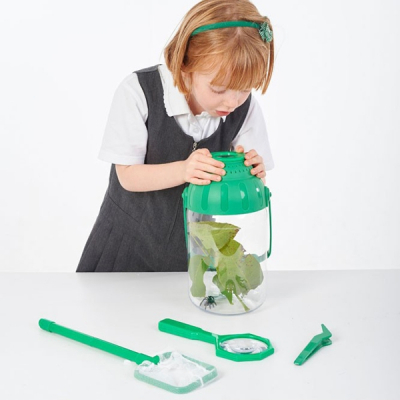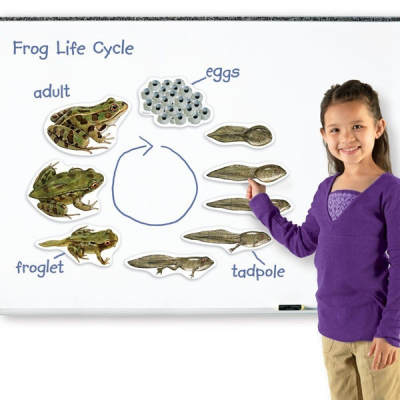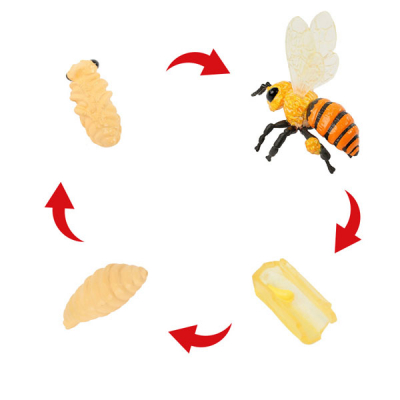Breeding kit "wild bees with cocoons", 5 pieces
The diversity of animal and plant species, the biodiversity of our planet, is under threat. This is becoming increasingly visible in gardens and school settings. The declining bee po... Read more
The diversity of animal and plant species, the biodiversity of our planet, is under threat. This is becoming increasingly visible in gardens and school settings. The declining bee population has been a major topic in the media of late. While most people are aware of the decline in honey bees, the decline in wild bees is even more drastic: almost half of the 560 species of wild bee in Germany are on the endangered species list or even under threat of extinction.
The Hagemann wild bee breeding kit helps you support local biodiversity. Breeding these harmless red mason bees (insect of the year 2019) is simple. From April to June, these harmless wild bees buzz and fly around the nesting box looking for food, laying eggs and building nests – an unforgettable experience for kids! It is entirely possible that other species of wild bee will settle in the nesting box in addition to the harmless variety. You can also observe the transformation from larva to wild bee in the specially developed Hagemann nesting box.
Hagemann nesting box
The Hagemann nesting box has been tailored to the educational needs of nurseries and schools. It consists of six nesting trays in which these peaceful wild bees can lay their eggs. The Hagemann nesting box also has a hatching chamber for the cocoons. Bees can safely hatch there away from predators.
The Hagemann nesting box includes a pull-out observation compartment. Here children can observe and document the development cycle (metamorphosis). The nest trays with nest tubes provide the wild bees with plenty of space for their young.
The nesting box must be set up outdoors. Mason bees are highly territorial. They always return to wherever they hatched once they have sufficient food. Consequently, they need to hatch wherever the nesting box will subsequently be located. For wild bees, in this case red mason bees, there are no worker bees or queen bees. Red mason bees are solitary workers who are left to their own devices.
The Hagemann nesting box is made in Germany.
The project sequence
You receive the breeding set, erect the nesting box so it is protected from the rain and place the cocoons in the hatching chamber inside. The wild bees will hatch out in mid-late April, sometimes even earlier if the weather is warm. However, it is also no problem to store the cocoons in a cool place until late April (if necessary, even until mid-May, see below) so that you can plan a precise project start date between April and May.
Scheduling the project start
If you have planned your project schedule and want to ensure that the wild bees do not hatch too early, store the bee cocoons inside their ventilated bee tub in the fridge between 2° and 4° C. If you remove the wild bee cocoons from the fridge after their natural hatching time, they will typically hatch the same day. Wild bee hatching can be delayed until mid-May at the latest by keeping them in the fridge.
If you simply want to prevent the wild bees from hatching too early and want to store the cocoons in the nest compartment, you can store the nest compartment in a cool basement or dark shed. This prevents the wild bees from hatching too early in warm weather, e.g. if your project is not yet due to start or there is currently insufficient food (flowers) for them.
Important: good hatching timing
In order to ensure that as many bees survive the first three to six days after hatching, the wild bees must hatch at the same time as the flowers start to blossom. So, if there are no suitable plants growing at your site, you will need to follow the instructions for sowing the seed mix provided, taking note of how long the plants need to grow and the time when they are expected to blossom. Typical nutritional plants for red mason bees can be found in our information on wild bees. You should also take into consideration the current weather conditions and climate changes which may affect your planned hatching time.
Ordering and delivery
When you order our compact set Hagemann wild bee hatching set, you will receive everything you need for breeding. The complete set can only be delivered in the months between January and May.
When you receive the set, remove the cocoons from the pack as soon as possible and store them in a cool place (e.g. unheated basement, garage). From mid-late March they must go immediately into the refrigerator. If you haven't planned an exact date for the start of your project, you can put them in the hatching compartment of the nesting block and simply wait with the children until the wild bees hatch on a warm day in mid to late April.
Note
we typically ship the cocoons at the start of the week, otherwise they would be in transportation for an unnecessarily long period over the weekend.
When planning, remember:
If you have received your cocoons, the mason bees will hatch from mid/late April unless their hatching time is delayed. This can be delayed until mid-May at the latest by keeping the cocoons chilled. From April to June, these harmless wild bees buzz and fly around the nesting box looking for food, laying eggs and building nests.
Tip
Order the Hagemann wild bee breeding kit in good time, or even before you need it. This will give you enough time to plan your project. Please read the detailed instructions provided, the key information and tips on how to use in lessons. These can be found in the folder provided.
Observing wild bees
Wild bees are extremely useful creatures and very peaceful. This means they are ideally suited for projects involving younger children of nursery and primary school age. By interacting and acquiring expertise about the development and lifestyle of wild bees, children and adults can overcome any potential fear of bees, wasps and other stinging insects.
The Hagemann wild bee breeding kit offers lots of exciting insights into the life of these harmless wild bees. At the same time, it is a nice way to design more natural outdoor areas and to create opportunities for other insects and animal species to become established. Little by little, a piece of nature can be created in nurseries and schools. Children can observe the fascinating wild bees and their buzzing relatives with their own eyes.
Of course, the Hagemann wild bee breeding kit is also suitable for your garden at home or the allotment.
Scope of delivery:
1 Hagemann nesting box with hatching chamber plus nesting and observation compartment
1 tin clay powder (approx. 300g)
1 sachet seed mix (approx. 10 g) flower meadow for 10 m²
50 wild bee cocoons
1 folder with detailed instructions, key information, tips on how to use in lessons, 12 worksheets
3 interactive exercises, online with web code
The teaching materials contain lots of valuable ideas for environmentally friendly, climate-aware behaviour and to educate children about sustainable development. These ideas are flagged with the "We are protecting our earth symbol" and can be quickly identified.
Dimensions: unverified, nesting box: height approx. 17 cm, width approx. 16 cm, depth approx. 16 cm
| SKU | TIX-6973 |
|---|---|
| EAN-/UPC-code | 4055218820052 |

